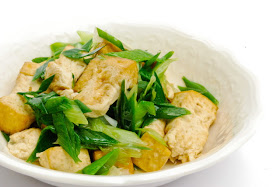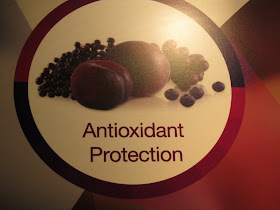
Health is inclusive of all in all that is in us, visible or invisible. Achieving total health and happiness is possible for all those who earns and wills it. When we have health, we have hope, when we have hope, we have life. It's our utmost duty to maintain balanced body, mental, emotion and spirit and persist to be whole and intimately connected. Prevention is much better, cheaper and smarter than cure. Understand that this is the only race where all humans should be winners!
Pages
Wednesday, June 30, 2010
Acidosis & toxemia, these are the 2 culprits found in our body to be causing us illnesses. Thus comes the tao/skill of eating...

To maintain health, the diet should consist of 60% alkaline forming foods and 40% acid forming foods. To restore health, the diet should consist of 80% alkaline forming foods and 20% acid forming foods.
Generally, alkaline forming foods include: most fruits, green vegetables, peas, beans, lentils, spices, herbs and seasonings, and seeds and nuts.
Generally, acid forming foods include: meat, fish, poultry, eggs, grains, and legumes.
Another alkaline/acidic chart from the health department... for your reference...
| Figs | 30.0 | Potatoes | 2.0 |
| Soy Beans | 12.0 | Pineapple | 2.0 |
| Lima Beans | 12.0 | Cabbage | 1.8 |
| Apricots | 9.5 | Grapefruit | 1.7 |
| Spinach | 8.0 | Tomatoes | 1.7 |
| Turnip/Beettops | 8.0 | Peaches | 1.5 |
| Raisins | 7.0 | Apples | 1.0 |
| Almonds | 3.6 | Grapes | 1.0 |
| Carrots | 3.5 | Bananas | 1.0 |
| Dates | 3.0 | Watermelon | 1.0 |
| Celery | 2.5 | Millet | 0.5 |
| Cucumber | 2.5 | Brazil nuts | 0.5 |
| Cantaloupe | 2.5 | Coconuts | 0.5 |
| Lettuce | 2.2 | Buckwheat | 0.5 |
| Watercress | 2.0 | ||
| milk | Vegetable oils | ||
| Butter | White sugar | ||
| Oysters | 5.0 | Rice | 2.5 |
| Veal | 3.5 | W.Wheat/Rye bread | 2.5 |
| Most Fish | 3.5 | Most nuts (X-almond/brazil nut) | 2.0 |
| Organ meats | 3.0 | Natural Cheese | 1.5 |
| Liver | 3.0 | Lentils | 1.5 |
| Chicken | 3.0 | Peanuts | 1.0 |
| Fowl | 3.0 | Eggs | 3.0 |
| Most Grains | 3.0 | ||
All vegetable and fruit juices are highly alkaline. The most alkali-forming juices are: fig juice, green juices of all green vegetables and tops, carrots, beet, celery, pineapple and citrus juices. Vegetable broth is an extremely alkalizing drink.
Listed alkaline versus acid foods from 'Energize for life'... thus tofu is alkaline...
Alkaline Foods | Acid Foods | ||
Alkaline Vegetables Asparagus | Fruits Lemon | Meats Pork
| Dairy Products Milk |
Drinks 'Green Drinks'
| Others Vinegar | Drinks Fizzy Drinks | |
Seeds, Nuts & Grains Almonds
| Convenience Foods Sweets | Fats & Oils Saturated Fats | |
Fats & Oils Flax | Others Sprouts (soy, alfalfa, mung bean, wheat, little radish , chickpea, broccoli etc) | Fruits All fruits aside from those listed in the alkaline column. | Seeds & Nuts Peanuts |
General Guidance:
| General Guidance: Steer clear of fatty meats, dairy, cheese, sweets, chocolates, alcohol and tobacco. Packaged foods are often full of hidden offenders and microwave meals are full of sugars and salts. Over cooking also removes all of the nutrition from a meal! | ||
Tuesday, June 29, 2010
Post 1181... Give me 5! 5 x 5, 5 color beans cooked in 5 different ways...




Healthy, nutritious and delicious beans of different colors give us much protein and nutrients. They can be deliciously cooked and served..
[1] as salads with other vegetables
[2] as cooked beans/stew
[3] as desserts with coconut milk[iced kacang or ice-cream]
[4] as fermented beans
[5] as processed bean drinks/powder form
Thus there is no excuse that these beans cannot be easily blend into our daily food... They can be prepared as the above and most people will like it as much as my kids at home... One form or other, beans can be so deliciously eaten... yummy..
Romancing with colors in food, different colors give different nutrients and protection...

Health awareness should be emphasized on coloring our diet to provide more variety of nutrients and protection. Best of all, most fruits and vegetables are alkaline in nature that will control our level of acidosis in the body. It will also flush out toxemia in our body.
A great idea for a great healthier diet will be daily consuming:
5 types of cereals
5 types of nuts
5 different color beans
5 different color fruits
5 different color vegetables
Not too much but a little of everything. Deficiency is born out of 'neglect balancing of food'....


































